Similipal National Park, Mayurbhanj, Odisha.
Simlipal National Park, OrissaSimlipal Wildlife - Taking its name from the abundance of semul or red silk cotton trees that bloom vividly here, the Simlipal National Park is home to three of India's biggest animal species --Tiger, Asian Elephant and Gaur. Spread over a sprawling area of 2750 sq. kms, the park is at an altitude of 559.31 meters. Set on a wide expanse of Sal forest, this park is nestled in the very centre of Mayurbhanj, the northernmost district of Orissa. Notable variations in topography, conducive climate and required vegetation has supported large varieties of animals, birds and reptiles to flourish in one of the earliest and finest of India's 15 Tiger reserves falling under Project Tiger.

A forested, hilly terrain 200 km south-west of Kolkata, the reserve is endowed with an exceptional biodiversity. Of the reserve's almost 1,000 species of flowering plants, 94 are orchids, many of which are on show at the small display at Gurguria. The reserve remains open from mid October to mid June. An entry permit needs to be taken from the office of Assistant Conservator of Forest, National Park, Jashipur or from the Range Officer, Pithabata at Pithabata. Check Gate to visit the reserve. The tourists can explore the reserve from 0600 to 1200 hours in the day. This time is extended by two hours for the reservation holders and is 0600 to 1400 hours.

With the nearest airports being at 250 and 300 kms at Calcutta and Bhubaneshwar respectively, the reserve is 76 kms away from Lulung and 115 kms from Jashipur. The fauna at the Park including tiger, leopard, elephants, bison, sambar, porcupine, pangolin, flying-squirrel, hill myna, hornbill and pythons can be observed closely by exploring the reserve in private jeeps and cars. But before going on any such expedition, the tourists are advised to take an anti-malarial drug.

Simplipal National Park, a tract of total wilderness is spread over an 845 sq km core area. In the ancient days, this reserve was the hunting preserve of the Mayurbhanj maharajas. As a result of excessive hunting, the wildlife here was seriously damaged. And then it was in the year 1957 that a small area of it was declared a sanctuary. Today, the tiger reserve extends over 2,750 sq. km, within a larger area of 4,374 sq km that constitutes the biosphere reserve. But unfortunately, the tribal communities here still indulge in an annual ritual hunt (akhand shikar) with bows and arrows. To add more to the woes of the animals, encroachment, livestock grazing, poaching and indifferent visitors are also there. But the management of the reserve has managed to sustain a vast variety of wild life here despite nature's resilience. Better funding for effective protection and awareness is therefore required at this stage to sustain healthy numbers of animals.
NANDANKANAN,BHUBANESWAR,ODISHA
Nandankanan Zoological Park is a 400-hectare (990-acre) zoo and botanical garden in Bhubaneswar, Orissa, India. Established in 1960, it was opened to the public in 1979 and became the first zoo in India to join World Association of Zoos and Aquariums (WAZA) in 2009. It also contains a botanical garden and part of it has been declared a sanctuary. Nandankanan, literally meaning 'The Garden of Heavens', is located near the capital city, Bhubaneswar, in the environs of the Chandaka forest, and includes the 134-acre (54 ha) Kanjia Lake. A major upgrade was done during 2000 (after the ruins caused by the super-cyclone of 1999 in coastal Orissa). More than 2 million visitors visit Nandankanan every year.
RATNAGIRI
Ratnagiri (Odisha: ରତ୍ନଗିରି) was once the site of a mahavihara, or major Buddhist monastery, in the Brahmani and Birupa river valley in Jajpur district of Orissa, India. It was part of the Puspagiri University, together with Lalitgiri and Udayagiri.
History Ratnagiri was established no later than the reign of the Gupta king Narasimha Baladitya in the first half of the sixth century CE, and flourished until the twelfth century CE. A Tibetan history, the Pag Sam Jon Zang, identifies Ratnagiri as an important center in the development of the Kalachakratantra in the 10th century CE, an assertion supported by the discovery of a number of votive stupas, plaques, and other artifacts featuring Kalachakra imagery.
Architectural features
A large-scale excavation was conducted at the site between 1958 and 1961, uncovering much of what is known today. The main stupa dates to the 9th century AD and was likely built on the site of an earlier, Gupta-era stupa. Seals were found bearing the legend "Sri Ratnagiri Mahavihariya Aryabikshu Sanghasya," which helped identify it. Prominent, well-persevered standing statues of the bodhisattvas Vajrapani and Padmapani can be found in niches in a portico. Monastery No. 2 features a central paved courtyard flanked by a pillared veranda around which are eighteen cells, a central shrine featuring an image of Shakyamuni in varada mudra flanked by Brahma and Sakra, and elaborately ornamented entrance porticos.


According to Amit Jha, a lecturer in the Department of History at Sri Aurobindo College, Delhi University, "Ratnagiri comprises two magnificent monasteries, also rebuilt more than once. One of them was double-storyed and had an extensive courtyard with two-sides of it having a number of cells for habitation of monks. Besides, we have archaeological remains of six temples, thousands of small stupas, 1386 seals, myriad sculptural relics and architectural pieces of daily use. The largest stupa was 47 feet (14 m) square and 17 feet (5.2 m) high surrounded by four minor stupas. There are hundreds of miniature votive stupas decorated with lotus, petal and beaded tassels." A museum now located on the site displays statuary featuring Tara, Avalokiteshvara, Aparajita, and Hariti have also been found, all in prototypical of Gupta style.
SAPTA SAJYA,Dhenkanal, Odisha
One can proceed 12 km in the Sankarpur road from Dhenkanal Bus stop and then turn west at the Badagila chowk and pass two km to reach Saptya Sajya a scenic beauty where the holy temple of Maryada Purusottama Sri Ramachandra is located at about 900 feet at the hilltop. A mountains stream flows down as if touching his holly feet in veneration. Mythologically this place is important and many legends are still available. Its name is Sapta Sajya because, there are seven hills surrounding the area. Again there is story that, the Saptarashi had their ashramas here in this place.

There is also a mythological story, that, Sriram during his exiled or Vanabasha had spent seven days in this beautiful spot. Secondly the Pandavas during their 12 years of exile and one year of Agyanta Vasa had chosen this mountains for shelter. The Govt. constructed the Pukka road way in 1982. Inside the temple complex Maa Annapurna temple was constructed in 1982, the 1st floor Kalki temple in 1985, the Surya Narayan temple in 1990. Now the temple of Sri Rameswaram Shiva, Sri Ganesh, Sri Mahavir, and the Nabagrah Temple with each room for each graha are found. Mahakali, Mata Saraswati, Sri Nrushingha temple are conceived to be built in the holy complex. This scenic spot has become a good tourist and picnic spot where thousands of tourists and devotees gather from different corners of Odisha and India.
Khandadhar 1 , Keonjhar, Odisha
The Khandadhar Falls is located at Nandapani in Sundergarh district in the Indian state of Orissa. It is the 12th highest waterfall in India.
LocationThe Khandadhar Falls is 104 kilometres (65 mi) from Rourkela via Bonaigarh, and 60 kilometres (37 mile) from Kendujhar.
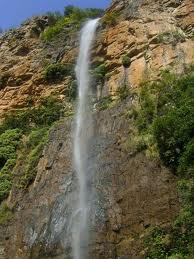 The falls
The fallsIt is a perennial horse tail type waterfall. The Korapani Nala, a small stream, plunges from a height of 244 metres (801 ft) in a single drop.
,
Kalijai Temple, Chilika, Odisha
Kalijai Temple is located on an island in Chilika Lake. It is considered to be the abode of the Goddess Kalijai. Highly revered by the local populace, the deity has been venerated in the local folklores and legends. The island provides an excellent destination for pilgrims as well as tourists. Every year in January, a huge gala fair is held during the festival of Makar Sankranti.
Legend
A girl was newly married and was going to her husband in a boat.As her in-law's house was inside an island in Chilika Lake it took a lot of time to reach.Orissa coast is much prone to Cyclones and suddenly such a cyclone came and the boat drowned inside the lake.All the Boatmen with her father were alive except that Girl Jaai undiscovered.After the accidental death of that newly wed girl whose name was Jaai she became goddess of people residing nearby area.And till now she is worshipped as an Amsa of Kali,hence the name of the place.
Baliharchandi, Puri, Odisha
27 km to the south-west of Puri is the temple of Baliharachandi. Situated on a sandy hill near the sea and adjacent to the mouth of the river Bhargavi, Goddess Durga is worshipped here as Baliharachandi. The scenic beauty of this place is ideal for group picnic
Khandagiri, Bhubaneswar, Khurdha, Odisha
Udayagiri and Khandagiri Caves(Odisha: ଉଦୟଗିରି ଓ ଖଣ୍ଡ଼ଗିରି ଗୁମ୍ଫା) are partly natural and partly artificial caves of archaeological, historical and religious importance near the city of Bhubaneswar in Orissa, India. The caves are situated on two hills Udayagiri and Khandagiri, mentioned as Kumari Parvat in Hathigumpha inscription and face each other across the road.

They have a number of finely and ornately carved caves. It is believed that most of these caves were carved out huge residential blocks for the Jain monks, during the reign of King Kharavela. Udayagiri meaning Sunrise Hill, has 18 caves while Khandagiri has 15 caves.
The caves of Udayagiri and Khandagiri, called lena or leṇa in the inscriptions, were dug out mostly during the reign of Kharavela for the abode of Jaina ascetics. The most important of this group is Ranigumpha in Udayagiri which is a double storeyed monastery. Unfortunately, a number of the Jaina caves on the Khandagiri side have encroachment problems, with local Brahmins turning them into Hindu shrines and covering up some of the Jaina iconography.
Daringbadi, Balliguda, Phulbani, Odisha
Daringbadi,a Plateu and a beautiful area.The height is 3000ft above sea level. It is an ideal summer resort which is popularly known as Kashmir of Odisha or the heaven of odisha. This place is gifted with natural scenery like pine trees, coffee gardens and beautiful valleys.
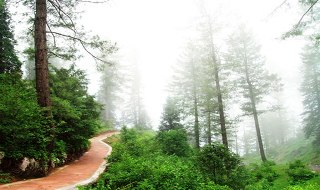
It is the only place in Orissa which experiences snow fall during Winter season. Journy to the hills of Daringbadi is an experience in itself. This pretty hill station is hundred kilometres from Phulbani and fifty kilometres from Balliguda.
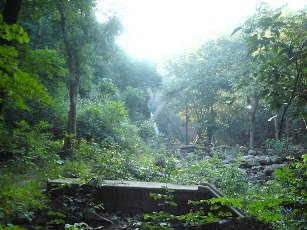
The resting places are P.W.D. Inspection Bunglow. It is near from the capital of odisha.The tourists will visit this place easity with their own vehicles,bus,train,and also aeroplane.The journey from the plains to the hills of Daringbadi is an experience in itself.
Paradeep Port, Jagatsinghpur, Odisha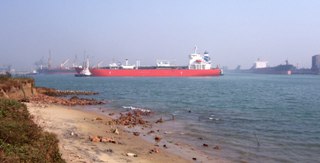
The importance of Paradeep and its beach is manifold. Besides being an attractive tourist spot, the Paradeep beach in Orissa is also one of the most important commercial sea port of the country. Paradeep which is actually an estuary of the Mahanadi River, is one of the most popular beaches of Orissa. Covered by green forests and adorned with natural creeks and island, the Paradeep beach is a paradise for all marine lovers.
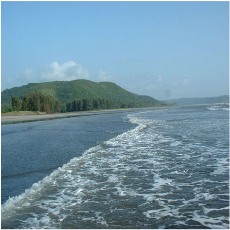
Paradip Port is a major seaport in Orissa, which is considered to be one of the largest ports on the eastern coast of India. During 2009 - 2010, this port recorded the handling of over 57 million tonnes of cargo, including thermal coal and iron ore.

It is also the chief sea-borne trade centre in the Bay of Bengal, whose foundation stone was laid in 1962 by the then Prime Minister of India, Pandit Jawaharlal Nehru. Paradip Port has also been specially mechanised with iron ore berths, cargo berths, container handling facilities and coal handling plants. Close to the port lies the Paradip Beach at the convergence of the Mahanadi River and the Bay of Bengal.






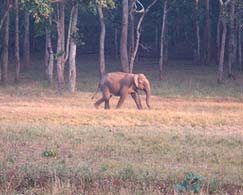



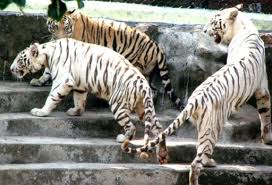
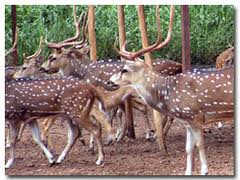
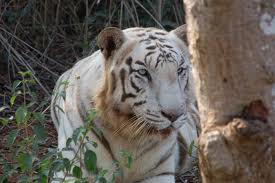
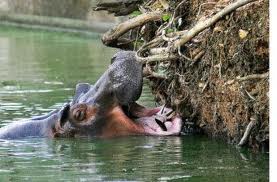



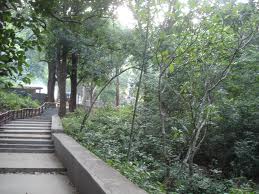


 A girl was newly married and was going to her husband in a boat.As her in-law's house was inside an island in Chilika Lake it took a lot of time to reach.Orissa coast is much prone to Cyclones and suddenly such a cyclone came and the boat drowned inside the lake.All the Boatmen with her father were alive except that Girl Jaai undiscovered.After the accidental death of that newly wed girl whose name was Jaai she became goddess of people residing nearby area.And till now she is worshipped as an Amsa of Kali,hence the name of the place.
A girl was newly married and was going to her husband in a boat.As her in-law's house was inside an island in Chilika Lake it took a lot of time to reach.Orissa coast is much prone to Cyclones and suddenly such a cyclone came and the boat drowned inside the lake.All the Boatmen with her father were alive except that Girl Jaai undiscovered.After the accidental death of that newly wed girl whose name was Jaai she became goddess of people residing nearby area.And till now she is worshipped as an Amsa of Kali,hence the name of the place.
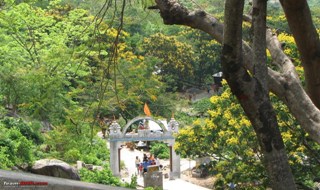
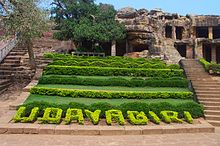
 They have a number of finely and ornately carved caves. It is believed that most of these caves were carved out huge residential blocks for the Jain monks, during the reign of King Kharavela. Udayagiri meaning Sunrise Hill, has 18 caves while Khandagiri has 15 caves.
They have a number of finely and ornately carved caves. It is believed that most of these caves were carved out huge residential blocks for the Jain monks, during the reign of King Kharavela. Udayagiri meaning Sunrise Hill, has 18 caves while Khandagiri has 15 caves. It is the only place in Orissa which experiences snow fall during Winter season. Journy to the hills of Daringbadi is an experience in itself. This pretty hill station is hundred kilometres from Phulbani and fifty kilometres from Balliguda.
It is the only place in Orissa which experiences snow fall during Winter season. Journy to the hills of Daringbadi is an experience in itself. This pretty hill station is hundred kilometres from Phulbani and fifty kilometres from Balliguda. The resting places are P.W.D. Inspection Bunglow. It is near from the capital of odisha.The tourists will visit this place easity with their own vehicles,bus,train,and also aeroplane.The journey from the plains to the hills of Daringbadi is an experience in itself.
The resting places are P.W.D. Inspection Bunglow. It is near from the capital of odisha.The tourists will visit this place easity with their own vehicles,bus,train,and also aeroplane.The journey from the plains to the hills of Daringbadi is an experience in itself.






